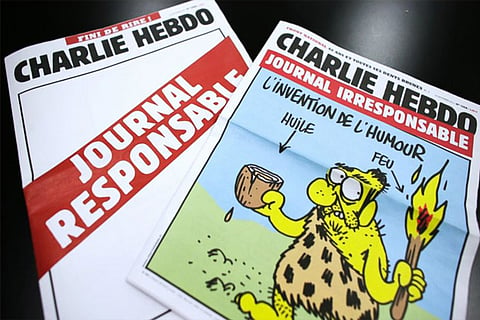

Chennai
It might be hard for many to condone the nature of the cartoons published by the French weekly, known for its biting wit. But when Charlie Hebdo ran afoul of religious extremists, who took offence to a series of its cartoons and embarked upon a senseless act of violence, it shook the consciousness of people everywhere – especially in France, which many consider being a libertarian and tolerant society.
It is almost a given that fear of retribution is the bane of satirists and scribes in developing nations. And that doubles for India where dealing with political and religious ideas are like walking on eggshells. But such a milieu has given rise to a subculture of low-brow satire and commentary – via meme and GIF factories that ride on social media. Pitched as the voice of the voiceless, a seemingly endless array of memes and GIFS (short for Graphics Interchange Format) has now become the lingua franca of armchair socio-political commentators and humourists.
Interestingly, the word meme was first coined by British evolutionary biologist Richard Dawkins in his book The Selfish Gene, where he attempted to explain how ideas replicate, mutate and evolve. Decades later, the word was hijacked by social media, where it took on a life of its own. The technology behind such content is often described as idiot-proof, owing to the simplicity with which it is created. As opposed to a cartoonist or an illustrator who might have honed skillsets over many decades, all that a GIF/meme maker needs is a sense of the news, a smartphone, and an image/video/audio clip that could be ripped from pop-cultural staples such as films and TV shows to news and current affairs footage on video sharing sites.
Also, unlike cartoons, pithy memes can be made in minutes, and are usually devoid of subtext or subtlety. It’s this nature of the content and the speed at which it can be delivered and consumed that makes it accessible to everyone from school-goers to senior citizens. Such democratisation of dissent might not have been a possibility, say even a decade ago. But today, it is hard to find a topic that hasn’t been parodied by memes. For instance – the recent ban imposed by the Centre on Chinese apps including PUBG, the uber-popular shoot-em-up game that was a hit among youth in India.
The Internet reacted with a flurry of content that poked fun at the reactions of parents as well as PUBG players themselves. An image of a tearful MS Dhoni superimposed over a screenshot of the game, which the CSK captain was quite fond of, became emblematic of the emotions of all gamers disappointed by the decision. Similar outpourings of grief mixed with hilarity were unleashed when news of India’s GDP contracting by 23.9 per cent was announced. It is customary for many media outlets to showcase memes released online as soon as any major news development is announced.
One may argue such content contributes to the dumbing down of a populace, cushioning against people’s built-in dislike for criticism. But it’s essential to understand the angst of the common man on the street, which many a time fuels the expression of such dissenting ideas. Alan Moore, the English writer, in his graphic novel V for Vendetta has said, “People shouldn’t be afraid of their government. Governments should be afraid of their people.” One can only hope that those in power view this form of dissent with some degree of maturity, and see it as an opportunity for reflection and course correction.
Visit news.dtnext.in to explore our interactive epaper!
Download the DT Next app for more exciting features!
Click here for iOS
Click here for Android